3/06/23
Based on the patient’s preoperative data, a 3D reconstruction of the patient’s medical image for tibial prosthetic joint replacement surgery is performed, and the surgeon performs a preoperatively conducts a comprehensive and integrated evaluation of the patient, as seen in the figure.
Based on the 3D reconstructed model, the tibial prosthesis was printed using MAGIC-HT-PRO and the surgeon performed the replacement prosthesis surgery as seen in the figure.
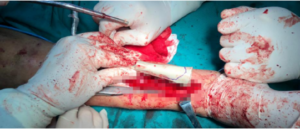
Remote Plasticity Design

Installlation (1)
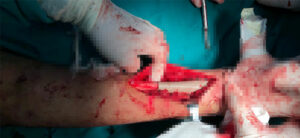
Installlation (2)
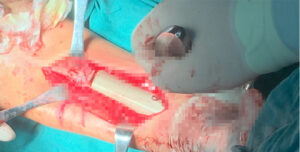
Complete
The surgery was completed successfully, and the patient recovered well after surgery, waiting for the removal of stitches, and waiting for discharge from the hospital.
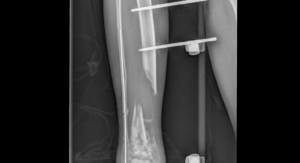
Post-operative data (orthotropic)
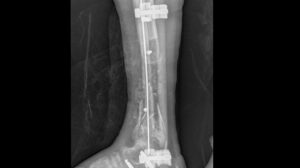
Post-operative data (lateral)
For patients with bone defects or deformities, conventional standardized medical implants are often inadequate due to individual differences and varying degrees of disease. Conventional standardized medical implants often do not meet the requirements. Therefore, the use of 3D printing Therefore, 3D printing technology can be used to quickly customize personalized and high-performance orthopedic implants to meet the specific needs of patients. The 3D printing technology can be used to quickly customize personalized, high performance orthopedic implants to meet the specific needs of patients.
Compared with traditional metallic implant materials, PEEK is a semi-crystalline high molecular material with light weight and high performance. It has the advantages of light weight, elastic modulus close to that of bone, wear resistance, excellent biocompatibility, and physical stability. It is one of the ideal materials for bio prosthesis implants nowadays.
PEK has good biocompatibility and is non-cytotoxic, mutagenic, carcinogenic, and non-allergenic, which are the most fundamental requirements for a material to be suitable for implantation.
Compared to metals, PEEK can be penetrated by X-rays and has good visual properties: 1. avoiding artifacts on the X-Ray film; 2. performing surgery with the aid of CT scanning or MRI, which helps the surgeon to adjust the position of the implant during surgery and easily follow the healing procedure after surgery. This allows for great monitoring of bone growth and healing.
PEEK is a combination of rigidity and flexibility, with an elastic modulus that is closer to the bone, allowing it to mitigate the stress masking effect, so that the stress on the bone is not entirely borne by the implant, which resulting in healthier, longer-lasting bones. Since its introduction to medical field, PEEK has been active in the field of intervertebral fusion in a variety of medical devices.